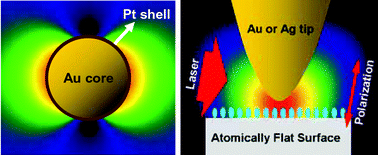Expanding generality of surface-enhanced Raman spectroscopy with borrowing SERS activity strategy
Abstract
Surface-enhanced Raman scattering (

* Corresponding authors
a
State Key Laboratory for Physical Chemistry of Solid Surfaces and Department of Chemistry, College of Chemistry and Chemical Engineering, Xiamen University, Xiamen, China
E-mail:
zqtian@xmu.edu.cn, bren@xmu.edu.cn
Fax: +86-592-2183407
Tel: +86-592-2186979
Surface-enhanced Raman scattering (

 Please wait while we load your content...
Something went wrong. Try again?
Please wait while we load your content...
Something went wrong. Try again?
Z. Tian, B. Ren, J. Li and Z. Yang, Chem. Commun., 2007, 3514 DOI: 10.1039/B616986D
To request permission to reproduce material from this article, please go to the Copyright Clearance Center request page.
If you are an author contributing to an RSC publication, you do not need to request permission provided correct acknowledgement is given.
If you are the author of this article, you do not need to request permission to reproduce figures and diagrams provided correct acknowledgement is given. If you want to reproduce the whole article in a third-party publication (excluding your thesis/dissertation for which permission is not required) please go to the Copyright Clearance Center request page.
Read more about how to correctly acknowledge RSC content.
 Fetching data from CrossRef.
Fetching data from CrossRef.
This may take some time to load.
Loading related content
